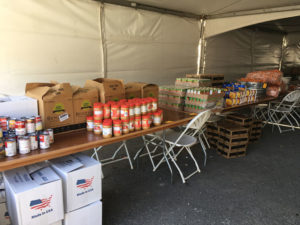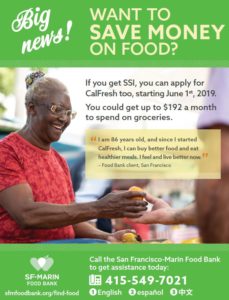How do you make Thanksgiving special for the people you care about? Here at the San Francisco-Marin Food Bank, preparation for the holiday season begins as early as July to bring much-needed health and comfort to participants and their families.
32,000 FAMILIES
We have a long-standing tradition of making sure that every person in need takes home a whole chicken and a variety of holiday trimmings when they visit their neighborhood pantry the week of Thanksgiving. It takes a lot of planning, coordination, and support to make it all happen, but it’s a commitment we love.
Angela Wirch, Director of Food Sourcing and Allocation says, “Our biggest Thanksgiving items are whole chickens. We have 32,000 families we need to serve to create a special holiday meal.” Angela and her team get to work as early as July securing holiday favorites that are donated from local farms and manufacturers, and purchasing the rest with donations from supporters like you.
ALL HANDS ON DECK TO PROVIDE THANKSGIVING MEALS
Fulfilling this holiday commitment takes a community. Each November, volunteers pack and sort ingredients for thousands of holiday meals. Warehouse workers load and unload thousands of pallets to make sure the food is stored safely. Truck drivers carefully navigate tight city streets to deliver the food on time. Agency partners coordinate efforts to distribute the food to people throughout San Francisco and Marin. Many of our agency partners cook large- Thanksgiving meals with turkeys and holiday favorites that they buy at a discounted price from our shop floor.
Vicky, lives in supportive housing in San Francisco, and she loves getting a whole chicken from the Food Bank for Thanksgiving.
“Sometimes I roast it, but sometimes I make a curry or fry it,” Vicky says. “I like the cranberries too, and I’ll steam the sweet potatoes. My family gets together for a nice Thanksgiving lunch, and we talk about what we are grateful for.”







Share